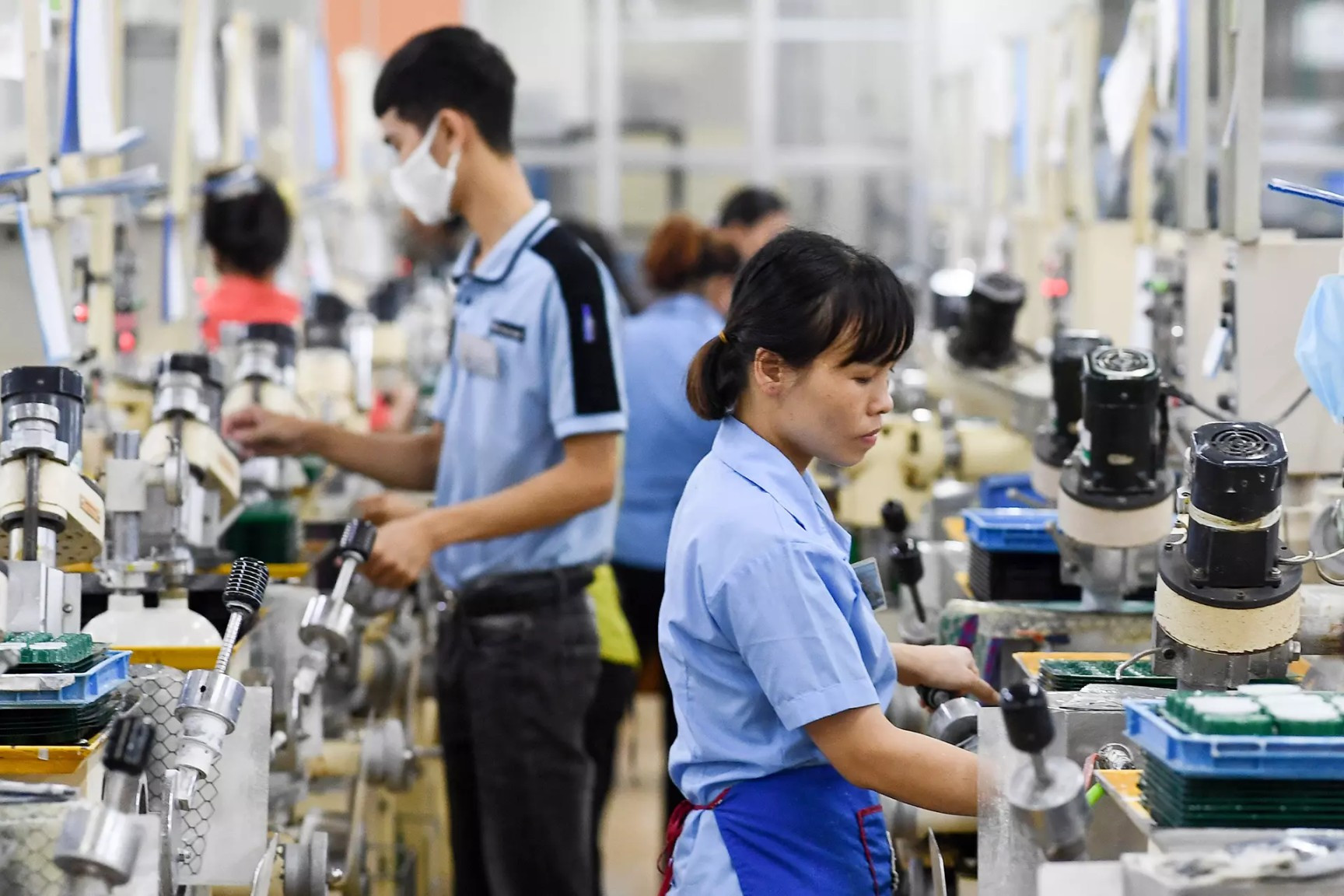
Economy revives after zero-Covid policy removed
Socio-economic activities have fully come back to normal, laying a firm foundation for growth.
The General Statistics Office (GSO) reported that GDP grew by 7.72 percent in the second quarter of the year in comparison with the same period last year, higher than Q2 growth rates of 2011-2021.
In H1, the industry and construction sector grew by 7.7 percent. The major driving force behind the growth was the processing and manufacturing industry with a growth rate of 9.66 percent.
Meanwhile, the service sector grew by 6.6 percent, or 1.7 times higher than the same period last year. The total retail turnover of consumer goods and services was estimated to increase by 11.7 percent.
Many localities have reported high GRDP, including Bac Giang (24 percent), Bac Ninh (15 percent), and Thanh Hoa (13 percent).
Minister of Planning and Investment Nguyen Chi Dung affirmed that the economy has been recovering rapidly with the GDP growth rate exceeding the rate of the highest scenario shown in Resolution 01/NQ-CP.
The GDP in Q2 grew by 7.72 percent compared with Q2 2021, the sharpest growth rate since 2011.
The figures show that the government’s move shifting from zero-Covid policy to a ‘safe adaptation to Covid-19’ was a good decision.
The vitality of the people
People and domestic enterprises are the major driving force for the impressive growth.
The number of businesses joining and re-joining the market reached 116,900 in H1, an increase of 25.4 percent over the same period last year. This was the first time the figure exceeded 100,000 in H1 in recent years.
The capital proportion of the non-state economic sector is on the rise, surpassing the proportion of other economic sector since 2020. The implemented capital invested by people and private enterprises was very high, accounting for 57.5 percent of total investment capital of the entire society disbursed in Q1, which was much higher than the 45 percent on average.
Of the total implemented investment capital of the entire society of 2021, in accordance with current prices, the non-state economic sector accounted for 59.5 percent, while the state-owned economic sector was 24.7 percent and FDI (foreign direct investment) 15.8 percent.
The increase in the capital proportion of the non-state economic sector in Q1 2022 and entire 2021 was very high compared with recent years (44.9 percent in 2020 and 46 percent in 2019).
What is behind the private sector’s surprising investment expansion? Are they really growing or are there problems in statistical work?
Whatever the reason, the private sector has been developing very rapidly, and becoming a driving force of the economy, especially as economic stimulus packages have been slow in implementation.
This shows that people and domestic enterprises can develop better if business conditions become more open, and bureaucracy and corruption decrease.
Growth below potential
The fact that the Q2 growth rate was higher than that of Q2 of 2011-2021 is not a surprise. And it would be not surprising if the growth rate in Q3 soars to nearly double-digit rate as estimated by economists.
This is simply because the growth rates in the respective quarters in 2021 were the lowest in history.
The problem is that though the growth rate is very high, Vietnam may not obtain the goals it set for 2021-2025, after it had a low growth rate of 2.91 percent in 2020 and 2.58 percent in 2021, the lowest levels in the last 30 years.
Since 2021, the GDP has been revised with an increase of 25 percent after re-calculation. Analysts estimated that GDP in 2021 reached VND9 quadrillion, a sharp increase compared with the VND6.3 quadrillion in 2020.
However, in reality, the GDP of 2021 was VND8.4 quadrillion only, according to GSO, which was far below expectations.
Nguyen Dinh Cung, former head of the Central Institute of Economic Management (CIEM), said that with the GDP growth rate of 2.58 percent in 2021, Vietnam would have to obtain a growth rate of 7.5 percent in the next four years to obtain the targeted average growth rate of 6.5 percent for this period.
Tu Giang